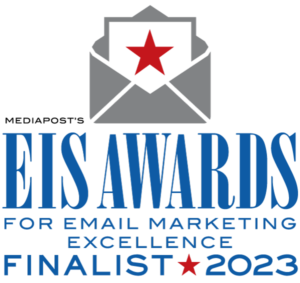Email, ughhhh. There is too much of it, and the wrong kind of it, from the wrong people. When people aren’t hating their inboxes out loud, they are quietly emailing to say that they’re sorry for replying so late, and for all the typos, and for missing your earlier note, and for forgetting to turn off auto-reply, and for sending this from their mobile device, and for writing too long, and for bothering you at all.
For an activity that’s so mundane, email seems to be infused with an extraordinary amount of dread and guilt. Several studies have linked frequent email-checking with higher levels of anxiety. One study found that constant email-checkers also had heart activity that suggested higher levels of cortisol, a hormone associated with stress—until they were banned from their inboxes.
In the mobile Internet age, checking email is simultaneously a nervous tic and, for many workers, a tether to the office. A person’s email inbox is where forgotten passwords are revived; where mass-mailings are collected; and where pumpkin-pie recipes, toddler photos, and absurd one-liners are shared. The inbox, then, is a place of convergence: for junk, for work, for advertising, and still sometimes for informal, intimate correspondence. Email works just the way it’s supposed to, and better than it used to, but people seem to hate it more than ever.
Over the course of about half a century, email went from being obscure and specialized, to mega-popular and beloved, to derided and barely tolerated. With email’s reputation now cratering, service providers offer tools to help you hit “inbox zero,” while startups promise to kill email altogether. It’s even become fashionable in tech circles to brag about how little a person uses email anymore.
Email wasn’t always like this. We weren’t always like this. What happened?
The computer engineer Raymond Tomlinson sent the first email in 1971. He can’t remember what it said, but people keep asking him anyway. “It was completely ephemeral, so any trace of it is gone,” he said. “There may be a machine that has some memory that was hooked up at the time, but you’d never be able to find it.”
Back then, Tomlinson was developing applications and protocols for the ARPANET, the early network that today’s Internet is based on.* (Today, he’s a principal scientist at BBN Technologies, a research and development arm of the defense giant Raytheon.) In 1971, the idea that anyone other than Tomlinson’s coworkers would want to use email was out of the question. “The computer was not personal,” Tomlinson said. “It was time-shared amongst several dozen users. Most computers were quite expensive—tens if not hundreds of thousands of dollars.”
“We’re stressing ourselves out. We’re living in notification hell.”
Email arrived at a time before mobile phones, when it was much harder to reach someone who wasn’t right there with you. “Getting ahold of people, especially those in other time zones, was very difficult,” Tomlinson said. “If they didn’t answer the telephone, if you were lucky, maybe they had a secretary—or an answering service if they were really important.”
In building apps for the ARPANET, Tomlinson and his colleagues had talked about some sort of mailbox protocol. One idea was to establish numbered electronic mailboxes so that messages could be printed out then hand-delivered to cubbies with the corresponding numbers. “I looked at that and said, ‘Well, it’s an interesting idea, but it’s way too complicated,’” Tomlinson told me. A simpler method, he thought, would be address messages to individuals. Though the goal was to be able to communicate with engineers working on the ARPANET at other universities, the first email Tomlinson sent was from one computer to another, both standing “literally side by side” in a Cambridge, Massachusetts, lab.
Between the roar of the computers and the whir of the air conditioner required to cool them down, the room was noisy. And the machine Tomlinson used to hit send barely resembled today’s computers. “Brace yourself for a sharp turn,” Tomlinson told me, “There was no monitor.”
Instead, he used a beige terminal the size of a large typewriter, without a mouse or trackpad, for inputting instructions. The terminal itself was something like a Teletype Model 33 KSR, and it was hooked up to a printer that spit out 10 characters per second, all capital letters.
Which means: The first email had to be printed out in order to be read.
Tomlinson’s the one who selected the @ symbol for email addresses, and it stuck—despite a brief period in the 1980s when some service providers experimented with exclamation points and percent signs instead.
In the early days, checking email required a person to log onto a computer and use the keyboard to enter a “type mailbox” command. “The mailbox was just a file and the type command typed the contents of the file onto the paper in the terminal,” Tomlinson said. “Some systems would check the user’s mailbox after they logged in, and if it was not empty, a message like, ‘YOU HAVE MAIL,’ would be printed.” A separate program had to be used to compose outgoing messages, before inbox-outbox functionalities were eventually integrated. “By the end of the 1970s, most of the features of email we take for granted were present,” Tomlinson said.
At first, email was useful, but it wasn’t widely used—it would be decades before electronic mail entered the mainstream. In the 1980s, early adopters flocked to networked services like CompuServe and Prodigy, both of which offered email access, though not necessarily as a central feature. Tim Berners-Lee outlined his idea for the World Wide Web in 1989 at a time when most adults in the United States didn’t own a personal computer. That quickly changed.
By 1995, about one-third of Americans owned computers and 14 percent of them reported having a home Internet connection—mostly sluggish dial-up. As Internet adoption steadily climbed, email became its cultural touchstone, and the inbox became a phenomenon. “If you don’t have an Internet address,” a then-37-year-old New Jersey man told The New York Times in 1994, referring to email, “it marks you as a nobody, as someone who’s over 40. It’s reaching the point that you get socially ostracized.”
America Online, the company that helped millions of Americans explore the web for the first time, was built around the experience of checking mail. Which meant that for millions of people, the experience of going online, from the very beginning, was fundamentally about checking your email. By 1997, electronic mail crept into workplaces and across college campuses. Email became a central plot device in the romantic comedy “You’ve Got Mail” in 1998, and was the subject of the Britney Spears song “Email My Heart” in 1999.
People were in awe of email. They loved it.
Until they didn’t.
Read the full article here.
Credit: Adrienna Lawrence for The Atlantic





